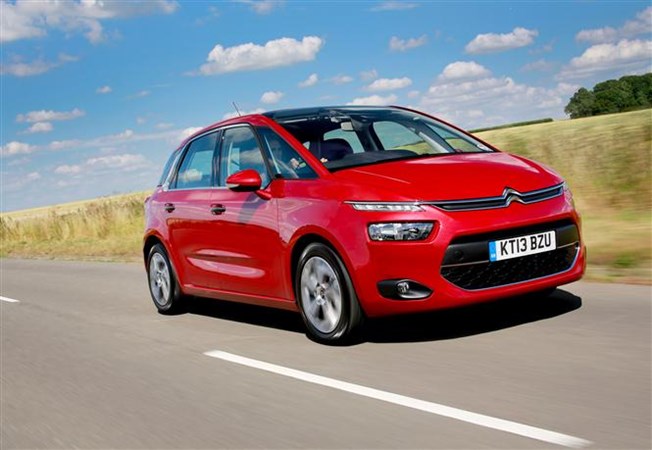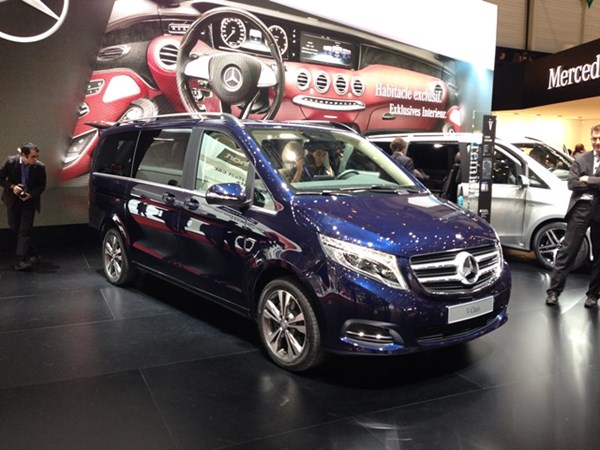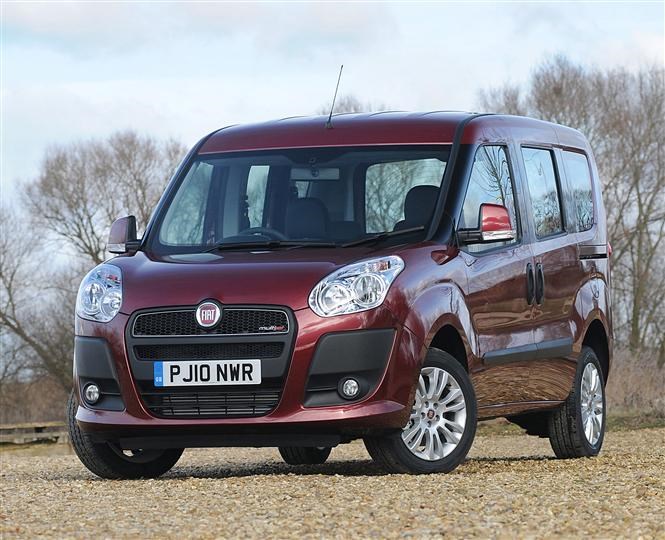Some people say that people carriers, or MPVs (Multi-Purpose Vehicles) as they’re also known, began life with the Renault Espace in 1984, while others argue Toyota, Chrysler or even Fiat had the idea first.
Either way, the majority of people carriers follow a similar template – front-wheels set well forward, a large, slab-sided body with a high roofline, and a variety of possible seating positions inside.
Rather handily, those qualities are also shared by the majority of vans. It’s not surprising, then, that manufacturers that make commercial vehicles as well as cars occasionally use their vans as templates for people carriers.
Examples include the Fiat Doblo, Renault Kangoo, Citroen Berlingo Multispace (below) and the curiously named Peugeot Partner Tepee.
.jpg)
At the larger and more expensive end of the scale there are plusher minibus-style vehicles such as the Mercedes Viano and Volkswagen Caravelle, often used to ferry well-to-do business types to and from conference venues or around airports. Some of these can be terrifyingly expensive – the top Business Edition Caravelle costs more than £70,000.
So, how do van-based people carriers stack up against their regular, more car-related counterparts?
Ordinary people carriers are either designed from the outset as an MPV (like the aforementioned Espace) or spun from an existing car’s underpinnings, usually the case with smaller people carriers – the Kia Carens, for instance, borrows most of its underpinnings from the Kia Ceed and the Ford C-Max from the Focus.
As a result, car-based people carriers are often nicer to drive than their van-based equivalents. The seven-seater Ford S-Max, for instance, is far more agile than you might expect of a bulky MPV.

Not being tied to the hard points of an existing van’s architecture can give the designers a freer rein, too. The Citroen C4 Picasso for example (above) is one of the most interesting looking cars you can buy today. Not only on the outside but inside too, with a dashboard that looks like it’s been borrowed from a spaceship and a huge windscreen that extends upwards into the roof.
There’s perhaps a bit less stigma attached to driving a car-based people carrier – after all, vans aren’t the most glamorous of vehicles and the addition of side and rear windows can’t disguise the commercial vehicle origins of models like the Peugeot Partner Tepee.
Where the van-based cars fight back is practicality – there’s nothing more useful than a van.
When the new Mercedes V-Class (which replaces the Viano this year, below) was unveiled at the Geneva motor show last week, its interior space was shown off by driving onto the stage with five people on board – a Mercedes spokesman plus a four-piece band complete with guitar, drum and double bass, who then hopped out and played a show.

In models where the rear seats can be removed (such as the Citroen Berlingo Multispace) it’s possible to essentially turn the car back into a small van.
This is a quality that’s handy for wheelchair users – the Renault Kangoo, for instance, has been popular with reduced-mobility users as it can be easily fitted with wheelchair mounting points.
There is a trade-off in terms of refinement in van-based cars – despite its leather-clad interior there’s no ignoring the various creaking and rattling sounds from the outgoing Mercedes Viano’s large body.
The driver’s environment tends to be a fairly plain place to be in most vans too, given they’re designed as no-frills working tools first and comfortable transport second.

That said, things are moving forward in that area: the Ford Tourneo Connect (the passenger version of the Transit Courier van) has a smart, well-finished dashboard and tough but attractive interior trim, while the 2014 Mercedes V-Class interior is very similar to the new C-Class executive saloon.
The final point to consider is value. While high-end van-based shuttle vehicles like the VW Caravelle and Mercedes V-Class are anything but cheap, at the smaller end of the scale the likes of the Citroen Berlingo Multispace and Fiat Doblo currently start from £13,160 and £14,350 respectively.
If you’re happy to trade a little refinement and styling flair for functionality, a van-based MPV could be exactly the kind of tough family workhorse you’re after.





.jpg)

.jpg?quality=50)